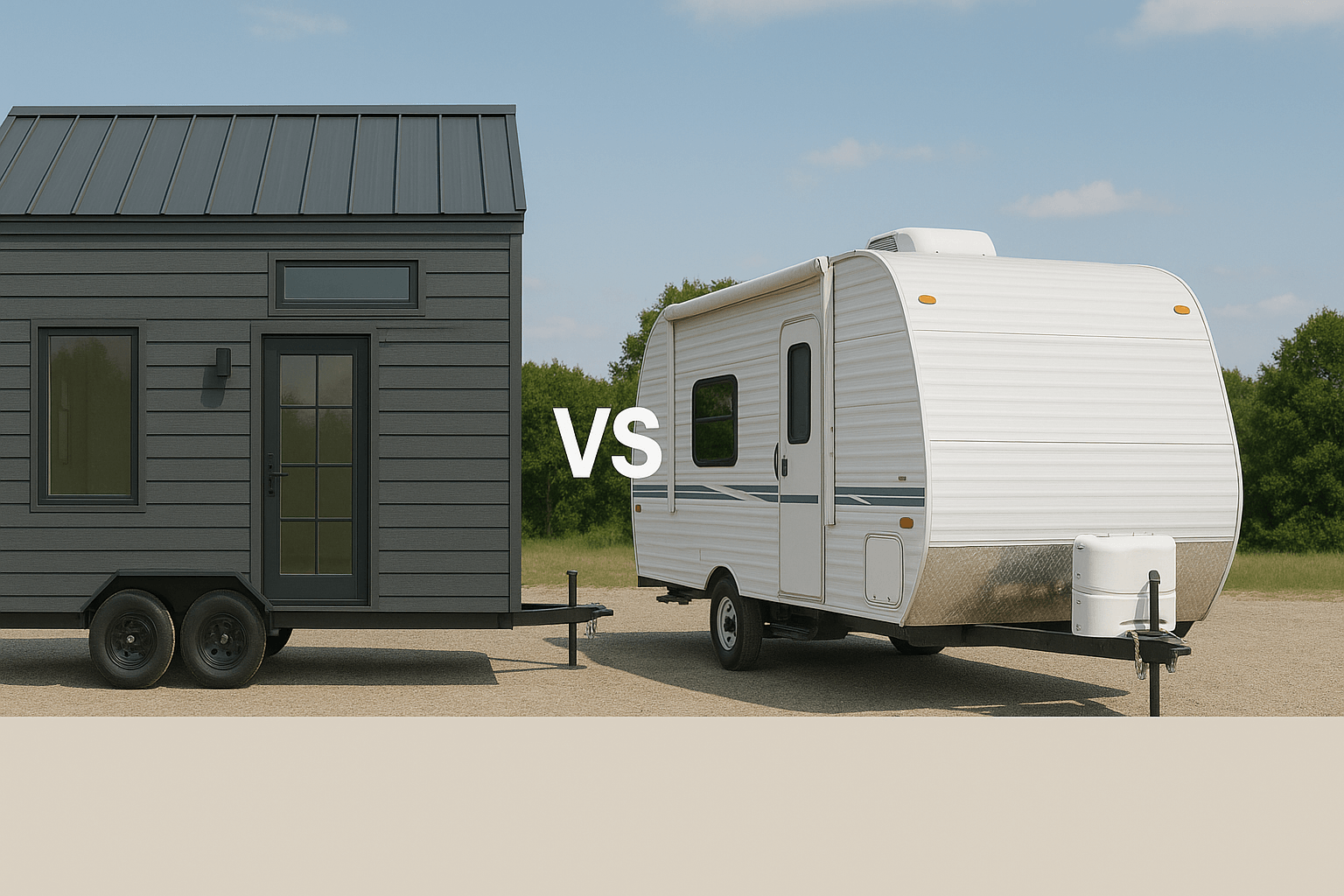The debate between tiny houses and RVs comes up constantly in the small living community. Both look similar from the outside. Both can move on wheels. Both offer affordable housing alternatives. But the similarities end there.
RVs are designed for vacation travel and temporary camping. Tiny houses are designed as permanent homes that happen to be small. This fundamental difference affects everything from construction quality to long-term costs to where you can legally live.
This comparison breaks down the real numbers, legal facts, and lifestyle tradeoffs so you can make an informed choice. We will look at upfront costs, depreciation, zoning rules, build quality, comfort, and ongoing maintenance for both options.
